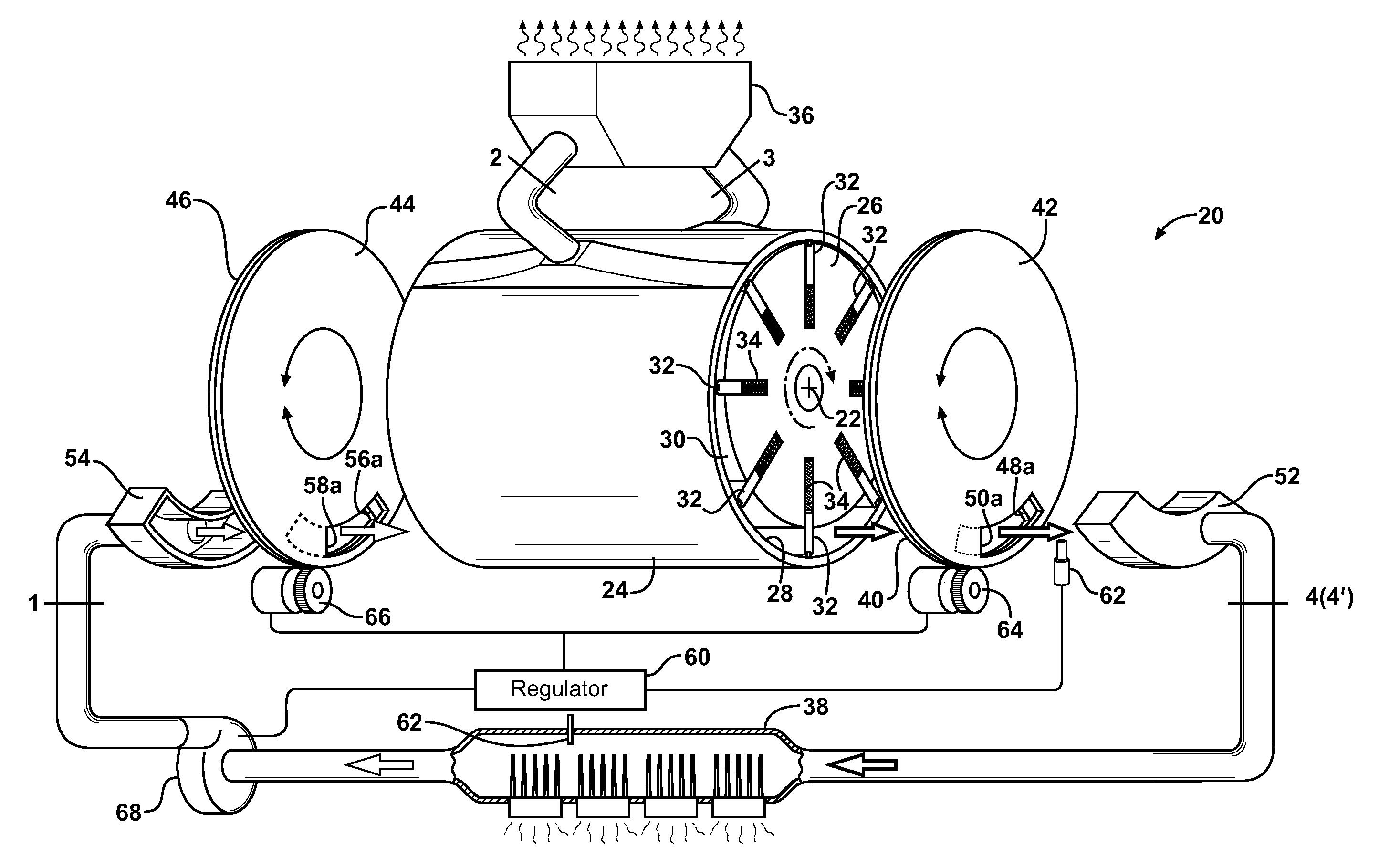High efficiency positive displacement thermodynamic system
a positive displacement, high-efficiency technology, applied in combination engines, machines/engines, mechanical equipment, etc., can solve the problems of insufficient condition to produce potential work loss, and insufficient mechanical conditions to achieve the expected efficiency increase, so as to minimize mechanical work, maximize the extraction effect, and minimize the amount of mechanical work
- Summary
- Abstract
- Description
- Claims
- Application Information
AI Technical Summary
Benefits of technology
Problems solved by technology
Method used
Image
Examples
Embodiment Construction
[0061]Referring to the Figures, wherein like numerals indicate like or corresponding parts throughout the several views, a positive displacement fluid-handling device, according to one embodiment of this invention, is generally shown at 20 in FIG. 6. In the embodiment depicted here, the device 20 takes the form of a rotary style positive displacement compressor / expander having an axis of rotation 22 oriented generally horizontal as viewed from FIG. 6. An outer stator portion 24 surrounds an internal rotor 26 supported for rotation about the axis 22. In this configuration, the stator 24 is static and the rotor 26 rotates with respect to the stator 24. The space between the inner wall 28 of the stator 24 and the outer surface 30 of the rotor 26 defines multiple working chambers which, as will be described in greater detail subsequently, form respective compression and expansion chambers. Extendible vanes 32 are supported in the rotor 26 and project outward into sliding contact against...
PUM
 Login to View More
Login to View More Abstract
Description
Claims
Application Information
 Login to View More
Login to View More - R&D
- Intellectual Property
- Life Sciences
- Materials
- Tech Scout
- Unparalleled Data Quality
- Higher Quality Content
- 60% Fewer Hallucinations
Browse by: Latest US Patents, China's latest patents, Technical Efficacy Thesaurus, Application Domain, Technology Topic, Popular Technical Reports.
© 2025 PatSnap. All rights reserved.Legal|Privacy policy|Modern Slavery Act Transparency Statement|Sitemap|About US| Contact US: help@patsnap.com



